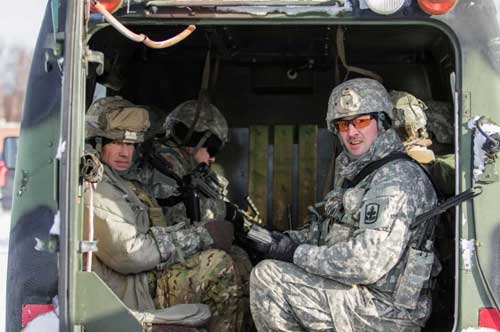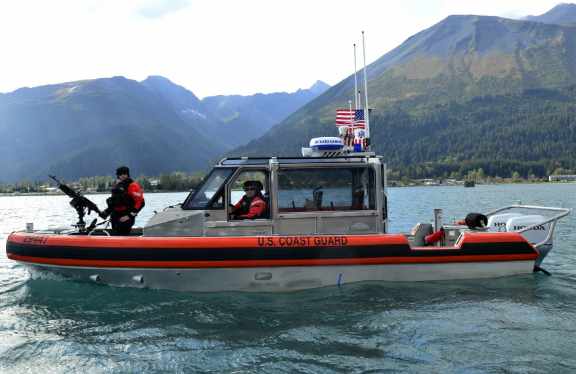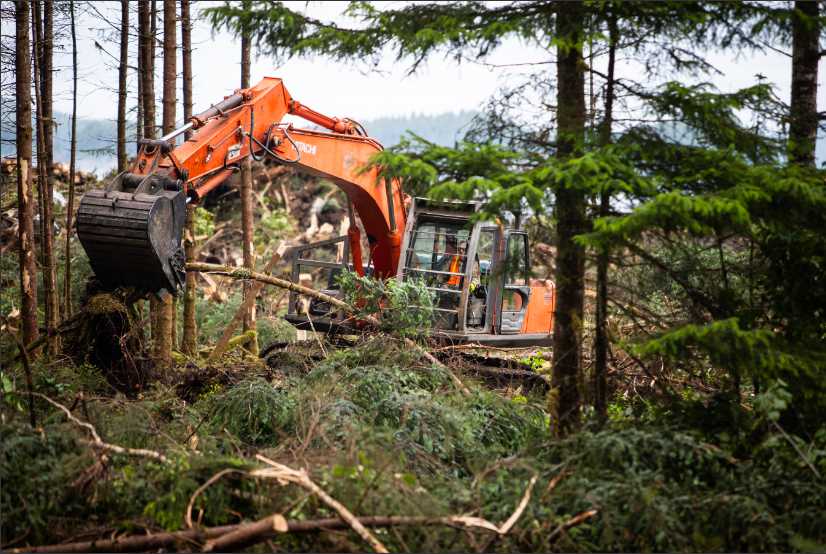Arctic Guardians of 176th Mission Support Group swap jobs to become Multi-Capable Airmen

JOINT BASE ELMENDORF-RICHARDSON, Alaska — The complexity of moving a flying mission from an Air Force base with all the bells and whistles to an austere airfield somewhere in the vast blue reaches of the Pacific is tantamount to a mini moonshot.
Accustomed to relying on a robust array of base agencies and facilities organized to safely and rapidly launch aircraft into aerial action, Air Force units are training to rapidly deploy capabilities with a small personnel and equipment footprint.
This innovative approach is part of Agile Combat Employment’s Multi-Capable Airmen. MCAs are trained to do additional jobs outside of their core Air Force Specialty Codes to decrease their unit’s footprint, allowing them to deploy smaller groups into forward operating sites and forward operating bases.
Senior Master Sgt. Michael Keegan, 176th Civil Engineer Squadron chief enlisted manager, said he worked with his counterpart at 176th Logistics Readiness Squadron, Chief Master Sgt. Shawn Morrissey, to arrange the MCA exchange for Airmen who didn’t deploy to King Salmon Air Force Station, which was the primary exercise site.
“Chief Morrissey and I got together a couple of weeks ahead of time and decided we wanted to participate somehow even though some of our Airmen weren’t going to the forward operating location for the exercise,” he said.
Keegan said he sent four heating, ventilation, air conditioning and refrigeration specialists to 176th LRS to work with warehouse operations and support equipment and a forklift.
Master Sgt. Santiago Maya, 176th Logistics Readiness Squadron Air Terminal Operations superintendent, said it didn’t take long for the HVAC/R Airmen to get to grips with the LRS equipment like their 10,000-pound all-terrain forklift.
“Over all, they did very well,” he said. “They were happy they got the opportunity to operate, and it seemed like they were naturals at operating this sort of equipment. They enjoyed it, and we enjoyed having them.”
Keegan said the 176th CES Airmen also experienced warehouse operations, which can also be helpful in their wartime mission.[content id=”79272″]
“Training in the procedures can help them do multiple jobs during a deployment with the same skillsets,” Keegan said. “For instance, warehouse operations is important for us because we do that for our core mission of rapid airfield-damage repair if we were ever to recover an airfield after an attack.”
Keegan said RADR is the process of repairing a runway after explosive ordnance has been removed.
“If the enemy were to blow up the runway, and we didn’t do our job fast enough, our people couldn’t land or take off from the runway until we’re done with our jobs,” he said. “If we had to go with a smaller footprint — a more agile and nimble team — if you can have more people trained to do different things, it meets the intent.”
Keegan said 176th CES welcomed three Airmen from 176th LRS training on heavy equipment, including a front-end loader, backhoe, and a dump truck.
Staff Sgt. Abraham Romero, noncommissioned officer in charge of 176th LRS Commander Support Staff, said he had the opportunity to ride with 176th CES heavy-equipment operators before being able to operate dump trucks and snow-removal equipment himself.
“At first I was nervous since I didn’t know how to operate this type of equipment,” he said. “It was scary, but once I got a feel for the controls, I felt very comfortable.”
Romero said the experience was a good respite from his daily duties.
“It was nice to get out of the office and try something different,” he said. “Now I won’t be scared if I have to jump in there and do it for real.”
Keegan said he would like to continue MCA exchanges with other units during upcoming training.
“We would like to expand on it, and we would like to mix different shops with different tasks,” he said. “I need to know a lot more about what LRS does myself, so once I understand that, we can integrate more.”
Maya said MCA broadens horizons for leadership as well.
“It gives us a better perspective of the overall mission set,” he said. “Sometimes we can get narrowly focused on what we’re doing day to day and not seeing what’s going on throughout the wing, so I think Multi-Capable Airmen is a great concept, and it allows us to capitalize on the diversity and skills we have.”
Romero said, at the end of the day, the experience was entertaining.
“It was real fun,” he said. “I would definitely do it again.”
###








